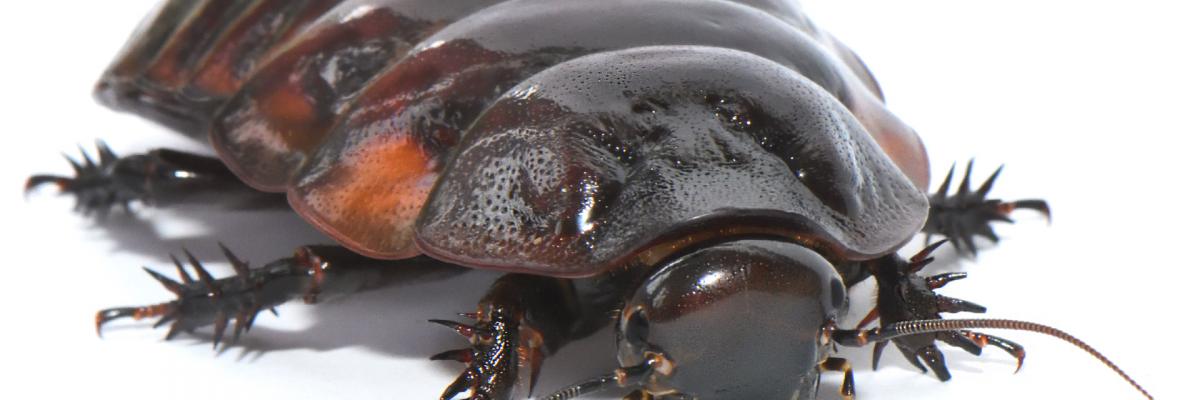Scientists unearth secrets about the evolution of soil-burrowing cockroaches
A research team led by a University of Adelaide evolutionary biologist has made new discoveries about the evolution of Australian soil-burrowing cockroaches, the iconic insects that are popular as pets.
Using DNA to reconstruct their evolutionary tree, scientists have confirmed these insects have evolved to acquire strikingly similar forms independently of one another, despite not being closely related - a unique process termed parallel evolution, or parallelism.

A giant burrowing cockroach (Macropanesthia rhinoceros), a species commonly bought as a pet that can reach up to eight centimetres long and weigh 30 grams. Image by Yi-Kai Tea - University of Sydney.
Australian soil-burrowing cockroaches are slow-moving, wingless animals which are nothing like the pest species most people are accustomed to. They live in permanent burrows in scrubland, feed almost exclusively on leaf litter - which makes them master recyclers of organic material - and are also caring mothers, with cockroach mums caring for their babies in burrows up to a year after they are born.
Aside from their unique behaviour, these insects are also interesting to evolutionary biologists including Dr Perry Beasley-Hall from the University of Adelaide's School of Biological Sciences - because they are thought to have undergone parallel evolutionary processes.
“We tend to assume that organisms that look similar to one another do so because they descended from a common ancestor, but parallelism involves the acquisition of the same traits - such as body forms, behaviour, or diet - in distantly-related organisms,” said Dr Beasley-Hall.
“These processes can occur because the organisms are being subjected to similar constraints in their environment. In the case of soil-burrowing cockroaches, ancient drying events in Australia are thought to have driven them underground to avoid the heat.
“As a result, we now know the majority of species are unrelated to one another and have in fact independently evolved from wood-feeding cockroaches, temperate-dwelling species with relatives in Southeast Asia, at least seven separate times.”
Dr Beasley-Hall's team robustly assessed the phenomenon of parallelism in soil-burrowing species for the first time.
They used DNA to reconstruct the evolutionary tree (or phylogeny) of soil-burrowing roaches and their wood-feeding relatives, and have created the most reliable phylogenetic framework for these insects to date.
“This updated phylogeny confirms the scenario of parallelism for these insects and adds to a growing body of knowledge demonstrating that organisms that experience analogous environmental pressures, such as continent-wide climate change, can acquire strikingly similar forms independently of one another.
“We also show that, beyond the acquisition of burrowing forms, there is an immense amount of morphological variation within these species that seems to be associated with how long certain ‘branches’ of their evolutionary tree have been underground in burrows.”
“The research sheds further light on an exciting evolutionary phenomenon that very few laypeople would be aware of, with specific relevance to an iconic Australian group of animals.”
Dr Beasley-Hall said, more broadly, the study is likely to have implications for insect taxonomy and conservation of the species.
“We found no evidence to retain the soil-burrowing cockroaches as a discrete taxonomic grouping, given these species are not closely related to one another,” said Dr Beasley-Hall.
“We can also confidently demonstrate that at present there are multiple undescribed species of these insects. This will not only require a reassessment of the naming conventions of these native species but potentially also the description of new ones, all of which have an unknown conservation status at present and might be vulnerable to environmental stressors such as human-induced climate change.”
The research was published in Systematic Entomology and also involved scientists from the University of Sydney and the Okinawa Institute of Science & Technology Graduate University in Japan.
